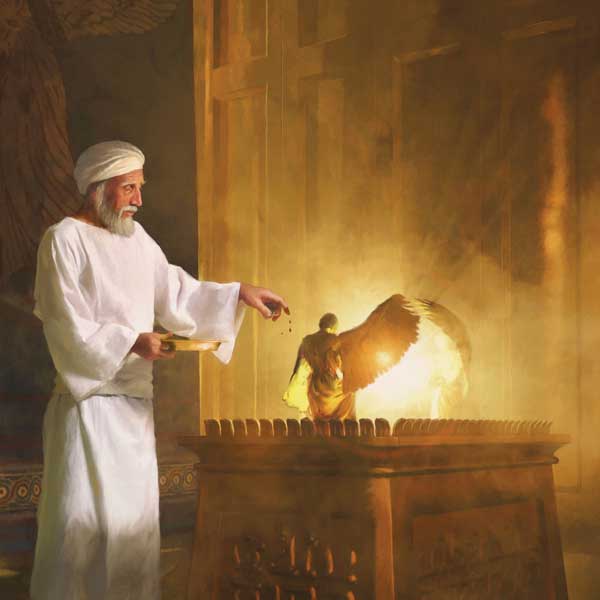
And he shall make an atonement for the holy place, because of the uncleanness of the children of Israel, and because of their transgressions in all their sins: and so shall he do for the tabernacle of the congregation, that remaineth among them in the midst of their uncleanness.
Once a year, on the great Day of Atonement, the priest entered the most holy place for the cleansing of the sanctuary. The work there performed completed the yearly round of ministration.
On the Day of Atonement two kids of the goats were brought to the door of the tabernacle, and lots were cast upon them, “one lot for the Lord, and the other lot for the scapegoat.” Verse 8. The goat upon which fell the lot for the Lord was to be slain as a sin offering for the people. And the priest was to bring his blood within the veil and sprinkle it upon the mercy seat and before the mercy seat. The blood was also to be sprinkled upon the altar of incense that was before the veil.“And Aaron shall lay both his hands upon the head of the live goat, and confess over him all the iniquities of the children of Israel, and all their transgressions in all their sins, putting them upon the head of the goat, and shall send him away by the hand of a fit man into the wilderness: and the goat shall bear upon him all their iniquities unto a land not inhabited.” Verses 21, 22. The scapegoat came no more into the camp of Israel, and the man who led him away was required to wash himself and his clothing with water before returning to the camp.The whole ceremony was designed to impress the Israelites with the holiness of God and His abhorrence of sin; and, further, to show them that they could not come in contact with sin without becoming polluted. Every man was required to afflict his soul while this work of atonement was going forward. All business was to be laid aside, and the whole congregation of Israel were to spend the day in solemn humiliation before God, with prayer, fasting, and deep searching of heart.Important truths concerning the atonement are taught by the typical service. A substitute was accepted in the sinner’s stead; but the sin was not canceled by the blood of the victim. A means was thus provided by which it was transferred to the sanctuary. By the offering of blood the sinner acknowledged the authority of the law, confessed his guilt in transgression, and expressed his desire for pardon through faith in a Redeemer to come; but he was not yet entirely released from the condemnation of the law. On the Day of Atonement the high priest, having taken an offering from the congregation, went into the most holy place with the blood of this offering, and sprinkled it upon the mercy seat, directly over the law, to make satisfaction for its claims. Then, in his character of mediator, he took the sins upon himself and bore them from the sanctuary. Placing his hands upon the head of the scapegoat, he confessed over him all these sins, thus in figure transferring them from himself to the goat. The goat then bore them away, and they were regarded as forever separated from the people.Such was the service performed “unto the example and shadow of heavenly things.” The Great Controversy, pgs. 419-420, EGW